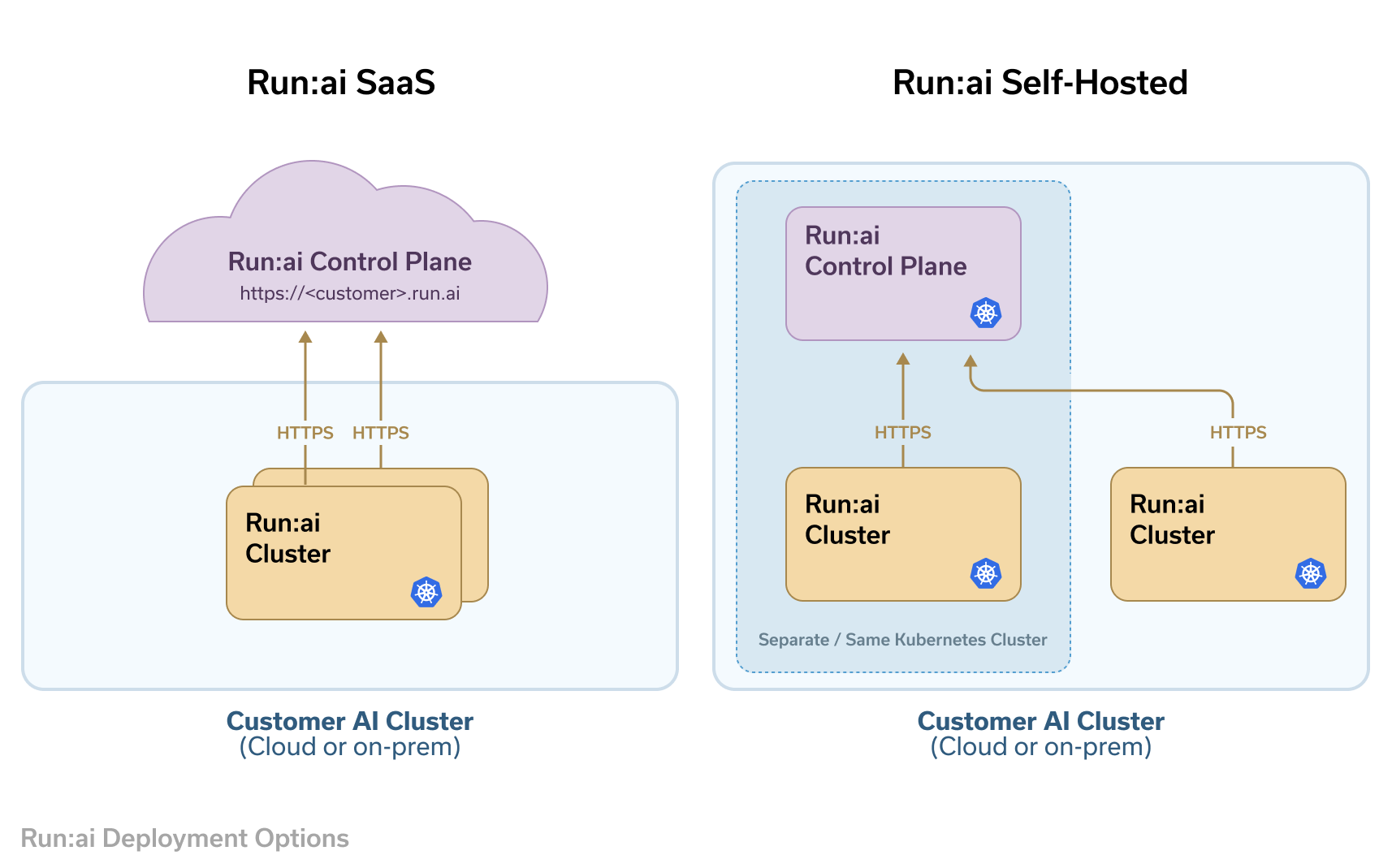Installation Types¶
Run:ai consists of two components:
- The Run:ai Cluster. One or more data-science GPU clusters hosted by the customer (on-prem or cloud).
- The Run:ai Control plane. A single entity that monitors clusters, sets priorities, and business policies.
There are two main installation options:
| Installation Type | Description |
|---|---|
| Classic (SaaS) | Run:ai is installed on the customer's data science GPU clusters. The cluster connects to the Run:ai control plane on the cloud (https://<tenant-name>.run.ai). With this installation, the cluster requires an outbound connection to the Run:ai cloud. |
| Self-hosted | The Run:ai control plane is also installed in the customer's data center |
The self-hosted option is for organizations that cannot use a SaaS solution due to data leakage concerns. The self-hosted installation is priced differently. For further information please talk to Run:ai sales.
Self-hosted Installation¶
Run:ai self-hosting comes with two variants:
| Self-hosting Type | Description |
|---|---|
| Connected | The organization can freely download from the internet (though upload is not allowed) |
| Air-gapped | The organization has no connection to the internet |
Self-hosting with Kubernetes vs OpenShift¶
Kubernetes has many Certified Kubernetes Providers. Run:ai has been certified with several of them (see the Kubernetes distribution section). The OpenShift installation is different from the rest. As such, the Run:ai self-hosted installation instructions are divided into two separate sections:
- OpenShift-based installation. See Run:ai OpenShift installation.
- Kubernetes-based installation. See Run:ai Kubernetes installation.
Secure Installation¶
In many organizations, Kubernetes is governed by IT compliance rules. In this scenario, there are strict access control rules during the installation and running of workloads:
- OpenShift is secured using Security Context Constraints (SCC). The Run:ai installation supports SCC.
- Run:ai provides limited support for Kubernetes Pod Security Admission (PSA). For more information see Kubernetes prerequisites.
